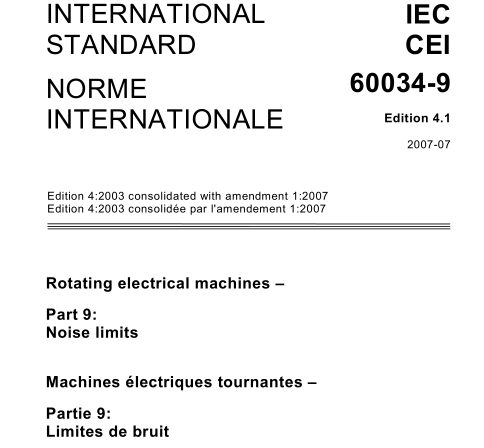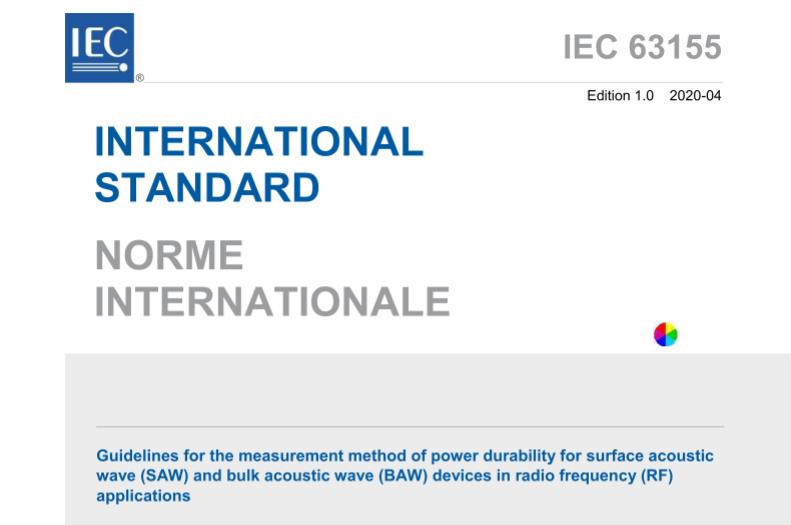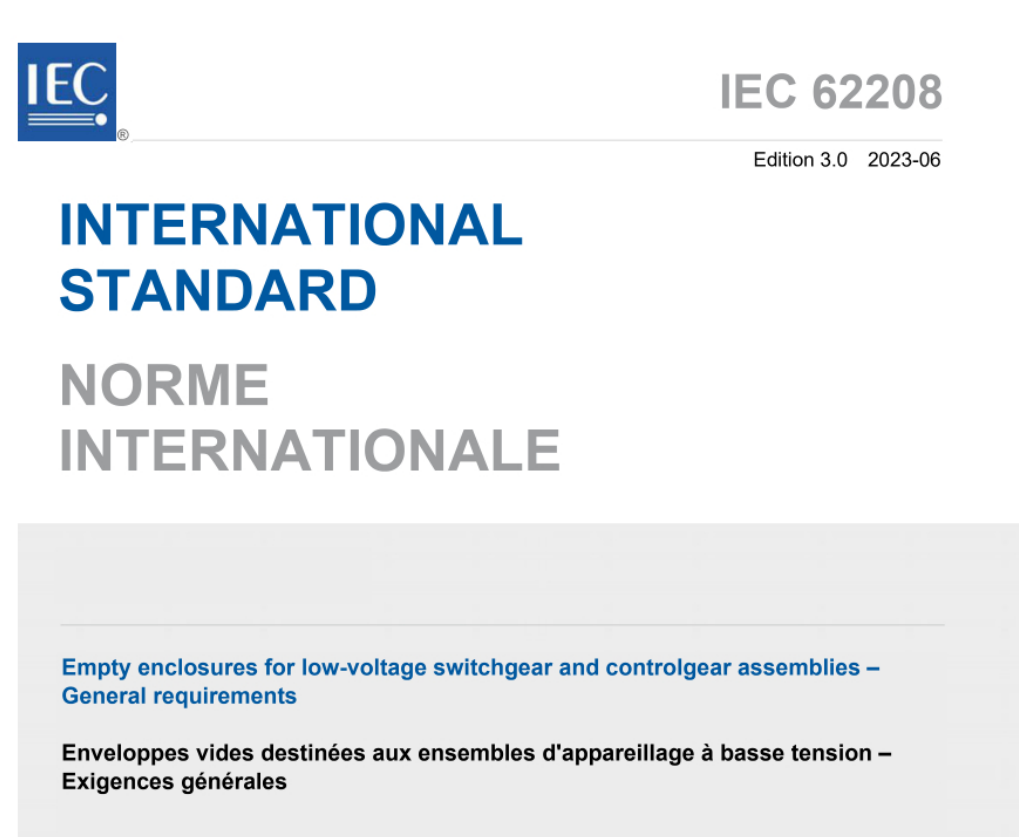This section of IEC 60034:
- Outlines testing methods for determining the sound power levels of rotating electrical machines.
- Specifies the maximum A-weighted sound power levels for factory acceptance testing of network-supplied rotating electrical machines, in accordance with IEC 60034-1, featuring cooling methods as per IEC 60034-6 and protection levels according to IEC 60034-5. These machines have the following characteristics:
- Standard design, whether alternating current (AC) or direct current (DC), without any additional special electrical, mechanical, or acoustic modifications aimed at lowering the sound power level.
- Rated output ranging from 1 kW (or kVA) up to and including 5,500 kW (or kVA).
- Rated speed not exceeding 3,750 min⁻¹.
- Provides guidance for assessing noise levels in AC cage induction motors powered by converters.
Note that AC motors supplied by converters are excluded; for these conditions, refer to IEC 60034-17 for guidance.
The purpose of this standard is to establish the maximum A-weighted sound power levels (L WA) in decibels (dB) for airborne noise produced by rotating electrical machines of standard design, based on power, speed, and load. It also specifies the measurement methods and test conditions necessary for accurately determining the sound power levels of these machines, facilitating a standardized assessment of machine noise up to the maximum specified levels. This standard does not account for tonal characteristics.
In certain applications, such as hearing protection programs, sound pressure levels at a distance from the machine may be needed. Clause 8 offers information on the procedure for this, based on a standardized testing environment.
NOTE 1: This standard acknowledges the economic rationale for having standard noise-level machines available for use in non-critical areas or in conjunction with additional noise reduction measures.
NOTE 2: If sound power levels lower than those specified in Tables 1 or 2 are desired, these levels should be mutually agreed upon by the manufacturer and the purchaser, as special electrical, mechanical, or acoustic designs may require further considerations.


